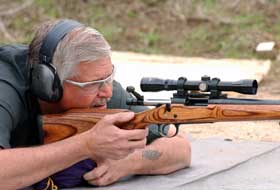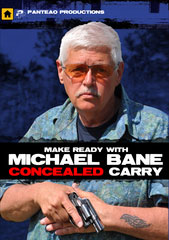X. The Causes of British Decline--and Some Danger Signs for Slippery Slopes
What makes a civil liberty particularly vulnerable to a slippery slope? This section discusses some particular factors that have made gun rights, like most of the rest of the freedoms guaranteed in the American Bill of Rights, particularly vulnerable in Great Britain: its structure of government, and its civil liberties organizations. Before addressing those topics, this Essay will consolidate the factors that have been touched upon in earlier sections.
A. Seven Key Factors
The first factor that undermined the British right to arms was a technological change when revolvers came to be seen by some persons as much more dangerous than previous weapons.[250] This same phenomenon can be seen in the treatment of other technological advances, such as the automobile, which from the 1920s onward, has often been treated by the United States Supreme Court as a "Constitution-free zone", where searches and seizures in contravention of normal Fourth Amendment standards may take place.[251](p.448)
The second factor that undermined the British right to arms was the role of the media, with its lurid and exaggerated accounts of gun crime in the 1880s, or its vicious denunciations of recreational shooters in the 1990s. This suggests that slippery slopes may be less dangerous when the right in question is supported by the press, as free speech and abortion rights are in the modern United States. Conversely, slippery slopes may be more dangerous when the press is indifferent, as in the case of federalism and states' rights, or actively hostile, as in the case of gun rights.
The third undermining factor was the development of government mistrust of the people, as in the 1920 fears of Bolshevism. We may hear echoes of this today in the United States government's fears the militia movement and its allies. Certainly, however, the dangers posed by the modern militia movement are much smaller than the dangers posed by Soviet communism and its United States agents in the 1950s or by violent anarcho-syndicalism in the early twentieth century. Consequently, the related suppressions of civil liberties have been smaller.[252]
The major "subversive" group in the United States today is not anarcho-syndicalists, militia members, or Fenians, but drug users. They are "traitors in the War on Drugs" according to much public rhetoric, and according to the United States' moralist-in-chief William Bennett, public beheadings of drug users would be a good idea. Over the last two decades, no force has been more important in eroding the civil liberties of all Americans, drug users and abstainers alike, than the War on Drugs.[253]
The shifting of the burden of proof, both at law and in popular discussion, was the fourth factor degrading the British right to arms. Rather than the government having to prove that a particular gun-owner or a particular type of gun was dangerous, the gun-owner began to have to prove his "good reason," and the government began deciding to outlaw weapons that the government did not think anyone outside the government had a good reason to own.
The "added authority" problem described by Schauer was of great significance. Once the people agreed that Parliament had the authority to decide whether to ban any type of gun, or to decide how people could acquire guns, a wide range of restrictions became intellectually conceivable. Even more significantly, once the police were given authority over licensing, they were able to use that authority to impose many additional controls, and to reduce the number of licensed shooters. In addition, Parliament's allowing the Home Office to ban weapons by administrative edict has resulted in certain weapons such as swordsticks being banned for no good reason.(p.449)
This suggests that often the most important aspect of a particular restriction on civil liberty, at least in terms of slippery slope dangers, is not the content of the restriction, but who will decide its contours. For example, the 1994 Congressional ban on "assault weapons" contained a complete definition of what an "assault weapon" is, and gave the Bureau of Alcohol, Tobacco, and Firearms no discretionary authority to add guns to the banned list. Thus, the potential future expansion of the law was constrained. Conversely, the most important aspect of Canada's latest gun control law, Bill C-68, is not that it bans some handguns, but that it gave the Prime Minister and his appointees the authority to ban any other weapon they want, without asking Parliamentary approval. Thus, how much "added authority" one control creates for future controls is a fifth important factor in estimating slippery slope dangers.
Additionally, how many people are there who care to resist infringement of a right? Few politicians seriously propose a total gun ban in the United States because there are seventy million gun-owning households--about half the population. But only about four percent of the British population legally owns guns--a much smaller interest group. If, over the course of generations, the percentage of a population that is interested in a right can be gradually reduced, stricter controls become more politically feasible, and the stricter controls can further reduce the long-term number of people who exercise their rights.
This suggests the long-term importance of young people exercising their rights. If high school newspapers have large staffs that fearlessly report the truth, the future of the First Amendment is better protected. If, conversely, laws prevent teenagers from target shooting or hunting, the future of the Second Amendment is endangered.
A final potential reason that a polity might move further down a slippery slope is that the polity sees the previous step as being useful. For instance, if a City Council imposed a 10 p.m. curfew for sixteen-year-olds, and night-time crime perpetrated by sixteen-year-olds fell significantly and immediately, the city council would likely consider extending the curfew to seventeen-year-olds. In the United States, there is no shortage of studies claiming that laws tightening gun controls (like the Brady Act) or laws relaxing gun controls, like laws allowing trained citizens to carry a concealed handgun for protection, reduce crime. Scholars such as John Lott, Gary Kleck, Arthur Kellerman, Garen Wintemute, and others, carry on a steady debate about the empirical benefits of various firearms policies. Anyone who follows the firearms debate seriously will soon encounter one of these social scientists on a television interview. The gun control debate in Canada likewise includes scholars such as Gary Mauser and Thomas Gabor, who make various empirical research claims for or against particular gun policies.
From an American point of view, one of the truly odd characteristics of (p.450)the British gun debate is the apparent irrelevance of social science. To the extent that any research is cited, the research is from North America, or involves transnational comparisons. Nobody cites British quantitative research because none exists other than raw crime statistics collected by the Home Office.
The raw statistics do make some facts clear: when Britain had no gun control (early in the twentieth century) or moderately-administered gun control (in the middle of the century), Britain had virtually no gun crime. Today, Britain literally has substantially more gun crime, as well as more violent crime in general. From 1776 until very recently, the United States has suffered a much higher violent crime rate than Britain, regardless of whether British gun laws were liberal or strict. In recent years, however, the once-wide gap in violent crime has disappeared. This gap was closed by a moderate drop in American crime rates, coupled with a sharp rise in the British rates. One does not hear British gun control advocates touting statistics about how crime rates fell after previous gun laws were enacted.[254]
Rather, the advocacy is based on the "inherent danger of guns," and on the "horror" of Dunblane and Hungerford. Even though Britain shows that demonstrated empirical success is not essential for movement down a slippery slope, success does help. The drop in New York City's crime rate following Mayor Rudolph Guliani's aggressive policing policies, which were roundly condemned by the New York Civil Liberties Union, has encouraged other cities to adopt similar policies. This, in turn, made Guliani's brand of authoritarian conservatism an important element in the national Republican party's thinking about crime policy.
There are certainly other factors that may affect the potential danger of a given slippery slope. The seven factors that this Essay has discussed, however, could be usefully analyzed in many different situations to examine the relative risks of a slippery slope argument. In addition to these seven factors there are several other factors that made the right to arms so vulnerable in Britain--and which also have implications for civil liberties in the United States. It is to these additional factors that this Essay now turns.
Thursday, December 11, 2008
The Slippery Slope
Here's a good article on how the Brits lost their gun rights. I thought it made sense to list the seven points on that slope:
Subscribe to:
Post Comments (Atom)






2 comments:
Just what I needed to do. Spend a half hour reading an article by a couple of lawyers. Can't we just sum this up? Old England good, todays England bad...
It's amazing how much "beliefs" have become the driving factor, versus facts and data, in our modern world. The facts and data clearly support OUR position on guns, but the liberal "beliefs" do not. This article presents that each side has data to support their respective positions. The truth is that the data does not support the anti-gun, or gun control position. It supports ours. That's why they rely on beliefs, or in the words of most, "lies". They rig studies, take faulty data and present it in a biased manner.
The liberal position would be, one would think, a position that supports our rights and views, even if different from their own. In stead, they take a totalitarian position which is contrary to what liberalism started out to be. Stupid, isn't it?
I'm still in favor of calling the anti-gun, or gun control movement what one of our other contributors here called it; "The Victim Dis-Armament Program".
Life Member
Post a Comment